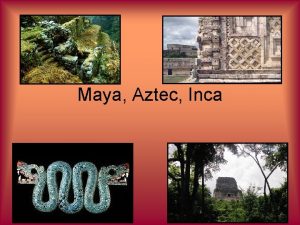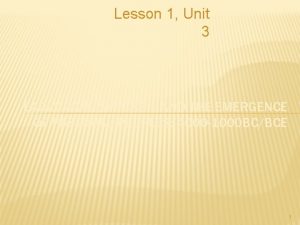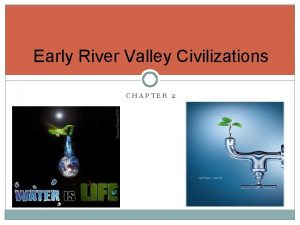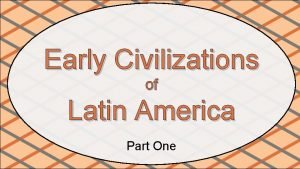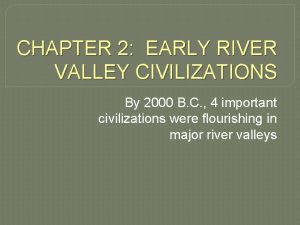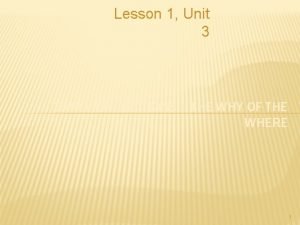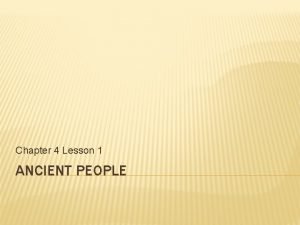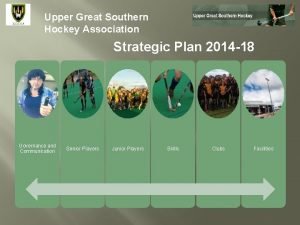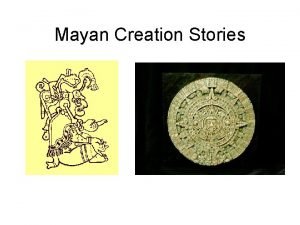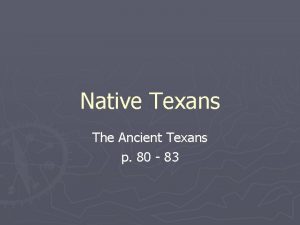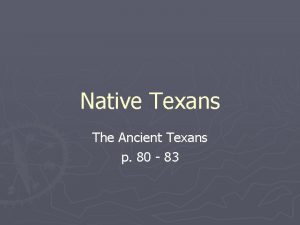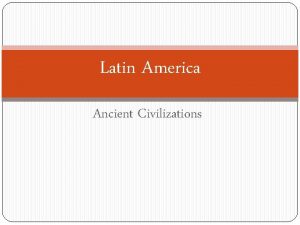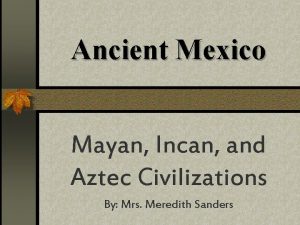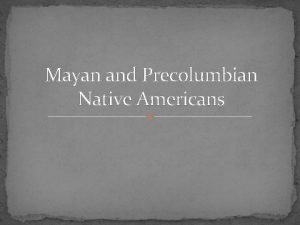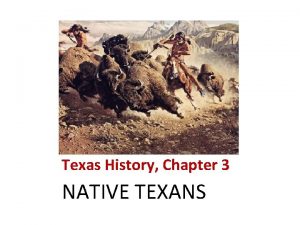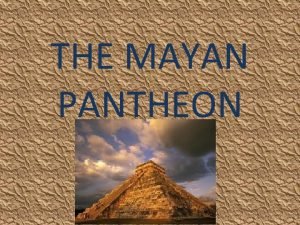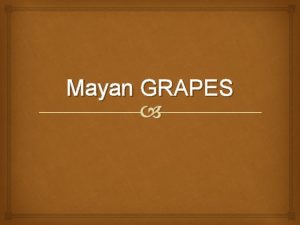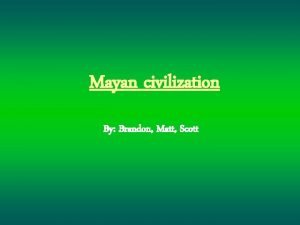Native Texans Early Great Civilizations Mayan Southern Mexico













- Slides: 13

Native Texans

Early Great Civilizations �Mayan • Southern Mexico and Central America (Mesoamerica) �Aztec • Mesoamerica �These two cultures are believed to have influenced Native Texans culture from artifacts to crops.

Agriculture and Settlement � Early Texans first started practicing farming and other agricultural activities around 700 A. D. • Farming was simple: �Trees and brush were first cleared and burned. �Holes were poked in the ground and then seeds placed in the hole. • Farming produced more food than hunting and gathering � By using agriculture efficiently, the Native Texans were able to settle in one place.

Native Texans of the Gulf Coast �The Coahuiltecan • Small game hunter and gatherers �Gatherers were mostly women. • Nomads �When the food ran out of one place, they would move to another �This harsh lifestyle made them ideal endurance runners. �The Karankawa • Fisherman �Used canoes to catch fish and mollusks �Used alligator grease to ward off mosquitoes.

Native Texans of the East �The Caddo • Largest of the East Texas tribes. �Built sturdy grass lodges and lived in large villages. �Their major chief was called “the caddi” �Other East Texas tribes: • Atakapan, Alabama, and the Coushatta.

Native Texans of the Plain � Apache • Learned very quickly how to hunt on the plains. �Men wore high boots for protection from thorns and also wore headbands to trap sweat. � Mescalero Apache • Were known to raid other tribes as well as known for their farming skills. • Enemies of the Comanche. � Comanche • Fine horsemen, known as the “Lords of the Plain” • Also known as raiders. �Would take goods and captives. � Kiowa • As with the Comanche and Apaches, they were known as skilled riders. �Worked with the Comanche to drive the Apaches from their territories. �Among the most feared native groups on the plain.

Natives of North Central Texas �Tonkawa • Hunted Buffalo and deer. �Traded the deer hides for goods and weapons. • Later joined the European settlers in fighting off the Comanche. �Wichita • Farmers: corn, beans, pumpkins, squash, and melons. • Very skilled artisans. • Women were held in high regard.

Native Texans of the Far West �Jumano • Lived in farming villages in one room houses. �Houses were made of “adobe”. �Adobe kept the homes cool in the summer and warm in the winter. �Inside of the homes were brightly painted. �Tigua • Also lived in adobe houses. �Cooked their food outside in round adobe ovens. • Skilled artisans by turning clay into beautiful pottery. • Grew cotton and wove it into cloth.

Late Comers �Cherokees • Arrived later from the east when the pressure of more settlers pushed them west. • Farmers • Intermarried with other tribes and became an important part of Texas history. �Kickapoo • Arrived from the Great Lakes area around 1830. • Lived in small huts which were round and covered by mats. • Farmers

Rise of the Europeans

Decline of Native Texans �Europeans brought disease • Smallpox, influenza and measles �Food supply running low. • Many Native Texan tribes depended on the Buffalo to survive. �Forced out of their territories to live on Reservations.

Reservations �Small area of land given to the Native Americans to live on. • Most tribes in the U. S. were driven into reservations far from there natural territories. �Alabama-Coushatta, Tigua and the Kickapoo are the only tribes with reservations in Texas.

Native Texans Today
 Map of inca maya and aztec
Map of inca maya and aztec Answer
Answer Lesson 1 the peoples of north america and mesoamerica
Lesson 1 the peoples of north america and mesoamerica Chapter 2 early river valley civilizations
Chapter 2 early river valley civilizations Inca diorama
Inca diorama River valley civilizations def
River valley civilizations def Ancient india lesson 1 early civilizations
Ancient india lesson 1 early civilizations Lesson 1 early civilizations
Lesson 1 early civilizations Chapter 11 section 1 early civilizations of africa
Chapter 11 section 1 early civilizations of africa The earliest texans lived in shelters made of wood.
The earliest texans lived in shelters made of wood. The first texans
The first texans William b travis
William b travis Ugsha
Ugsha Early cpr and early defibrillation can: *
Early cpr and early defibrillation can: *
